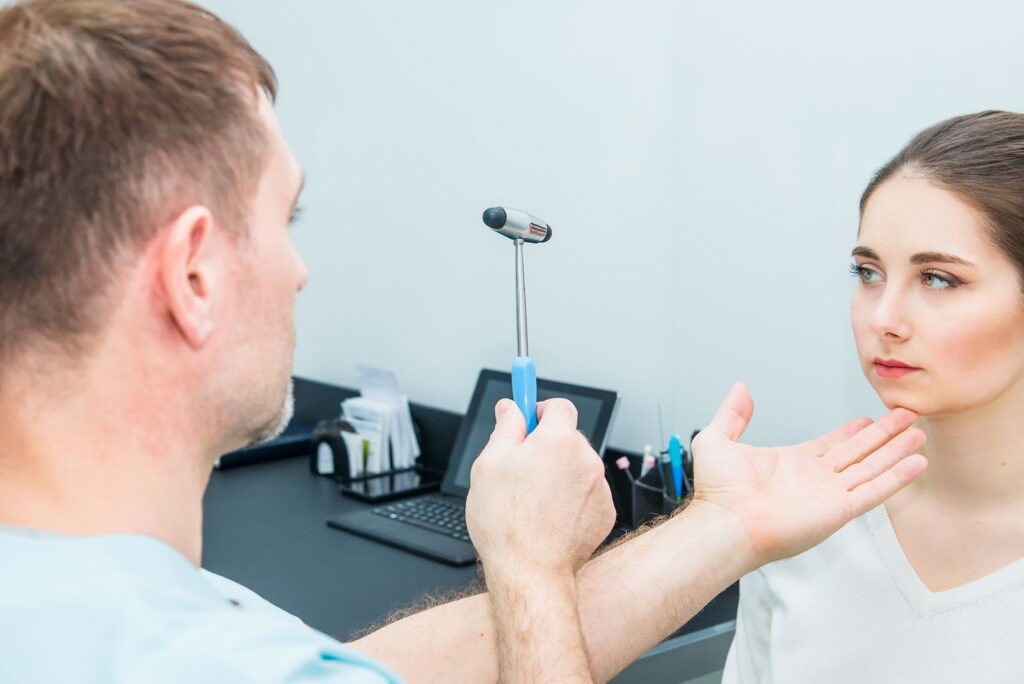
Learn about Neurological Exam Eye Tracking importance, technology, conditions diagnosed, and improving tracking accuracy. A must-read for in-depth insights. Are you familiar with the concept of a Neurological Exam Eye Tracking? Specifically, have you ever considered the critical role that Neurological Exam Eye Tracking plays in these examinations? In this blog post, we will delve into the world of neurological exams and explore the significance of eye tracking within this diagnostic process.
Neurological Exam Eye Tracking are essential assessments conducted by healthcare professionals to evaluate the functions of the brain, spinal cord, nerves, and muscles. Eye Tracking, in particular, offers valuable insights into various neurological conditions by measuring and analyzing eye movements. We will discuss the technology utilized in Eye Tracking, the neurological conditions that can be diagnosed through this method, and strategies to enhance the accuracy of eye tracking results. Stay tuned as we uncover the fascinating world of Neurological Exam Eye Tracking.
What is a Neurological Exam?
Neurological Exam is a thorough assessment of a person’s nervous system, focusing on the brain, spinal cord, and nerves. This type of exam is typically performed by a neurologist, who is a specialist in disorders of the nervous system. The purpose of a Neurological Exam is to evaluate a person’s ability to perform basic functions such as movement, sensation, coordination, and reflexes. It can also help diagnose conditions such as strokes, seizures, multiple sclerosis, and Alzheimer’s disease.
During a Neurological Exam, the doctor may test a patient’s mental status, cranial nerves, motor function, sensory function, and reflexes. They may also assess coordination, balance, and gait. In some cases, imaging tests such as MRI or CT scans may be ordered to provide further insight into the patient’s condition. Overall, a neurological exam is a crucial step in diagnosing and treating neurological disorders.
It is important to note that a neurological exam is not a single test, but rather a series of assessments that provide valuable information about a person’s nervous system function. By carefully examining the results of these tests, a neurologist can develop an accurate diagnosis and treatment plan for their patient. Regular neurological exams are especially important for individuals with a family history of neurological disorders, as early detection can lead to better outcomes.
Importance of Eye Tracking
Eye Tracking is a valuable tool in various fields such as psychology, marketing, and user experience research. By tracking a person’s eye movements, researchers can gain valuable insights into where a person’s attention is focused, how they process information, and even their emotional responses.
One key importance of Eye Tracking is its ability to provide objective data. Unlike self-report measures, eye tracking provides direct and accurate information about where a person is looking and for how long. This can be particularly useful in understanding user behavior on websites, in virtual reality simulations, or when interacting with digital interfaces.
Additionally, Eye Tracking can reveal subconscious processes that may not be captured through traditional methods. For example, researchers can use eye tracking to study implicit biases, visual attention patterns, and even neurological conditions such as autism or ADHD. By tracking eye movements, researchers can uncover insights that might otherwise go unnoticed.
Technology used in eye tracking
Eye Tracking technology has advanced significantly in recent years, allowing for more precise and detailed analysis of eye movements. One of the key technologies used in eye tracking is infrared light, which is emitted by a device and then captured by sensors to track the movement of the eye. This technology is particularly useful for tracking eye movements in low light conditions, making it ideal for a variety of research applications.
Another important technology used in Eye Tracking is video-based tracking, which uses cameras to capture images of the eye and then analyzes these images to determine the direction of the eye movement. This technology is highly accurate and can provide real-time data on eye movements, making it invaluable for studying a wide range of visual and cognitive processes.
Finally, remote Eye Tracking technology allows researchers to track eye movements from a distance, using specialized cameras and software to monitor eye movements without the need for the participant to wear any equipment. This technology is particularly useful for studying natural behavior in real-world settings, providing insights into how people interact with their environment and make decisions based on visual stimuli.
Neurological conditions diagnosed
Neurological conditions are disorders that affect the brain, spine, and nerves throughout the body. These conditions can have a wide range of symptoms, from mild headaches and dizziness to severe paralysis and loss of function. Diagnosing neurological conditions is crucial in order to properly treat and manage them.
Some of the most common neurological conditions include Alzheimer’s disease, Parkinson’s disease, multiple sclerosis, and epilepsy. Each of these conditions has its own set of symptoms and diagnostic criteria, and may require different treatment approaches.
Diagnosing neurological conditions often involves a combination of medical history, physical examination, imaging tests, and laboratory tests. A detailed Neurological Exam is usually performed to assess a person’s reflexes, coordination, and sensory perception. In some cases, additional tests such as MRI or CT scans may be necessary to further evaluate the condition.
Improving accuracy of eye tracking
Improving the accuracy of Eye Tracking technology is essential in order to ensure precise and reliable results in a variety of applications. One way to enhance the accuracy of eye tracking is through the use of advanced algorithms and machine learning techniques that can analyze eye movement data with greater precision.
Additionally, the development of eye tracking hardware that is more sensitive and responsive can also contribute to improved accuracy. By using high-quality cameras and sensors, eye tracking systems can capture eye movements with greater detail and accuracy.
Furthermore, incorporating user calibration and validation processes into Eye Tracking software can help to account for individual differences in eye movements and improve the overall accuracy of eye tracking measurements.